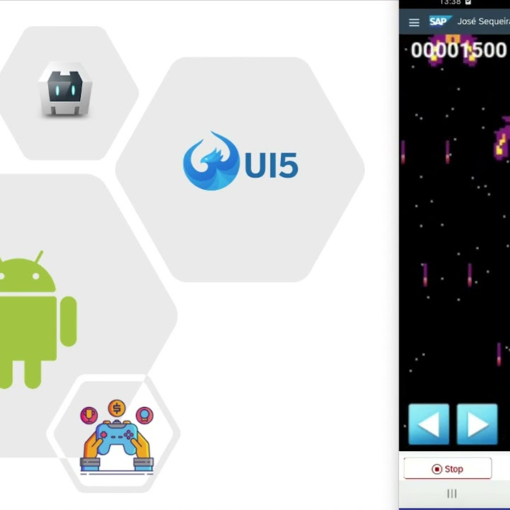Human-Machine Interface (HMI) development stands at the forefront of technological evolution, shaping how we interact with machines and devices. From the early days of command-line interfaces to the immersive experiences of touchscreens, HMI has come a long way, revolutionizing user interactions. In this article, we’ll delve into the intricacies of HMI development, exploring its history, key components, development processes, challenges, and future prospects.
Evolution of HMI
The journey of HMI development is a captivating narrative that spans decades. Starting from basic text-based interfaces, we witnessed the transition to graphical interfaces and, more recently, touchscreens and voice commands. Milestones in this evolution include the introduction of the mouse, touch-sensitive displays, and the integration of artificial intelligence (AI) for intuitive interactions.
Key Components of HMI
At its core, HMI development revolves around two key components: user interface design and interaction mechanisms. The way information is presented to users and the methods by which they can interact with the system significantly impact the user experience. Designers play a crucial role in creating visually appealing and user-friendly interfaces, while developers implement seamless interaction mechanisms.
HMI Development Process
Developing an effective HMI involves a systematic process. From the initial prototyping and design phase to rigorous testing and iterative improvements, each step contributes to refining the user experience. User feedback is invaluable during this process, helping developers understand user preferences and pain points.
Challenges in HMI Development
Despite advancements, HMI development comes with its set of challenges. Ensuring a positive user experience while integrating complex features poses a constant dilemma. Compatibility issues across different devices and platforms further complicate the development process. Striking a balance between innovation and user-friendly design remains a perpetual challenge.
Technological Trends in HMI
The future of HMI development is closely tied to technological trends. Artificial intelligence is progressively becoming a staple, offering predictive capabilities and personalized interactions. Responsive design, catering to various screen sizes and orientations, is another trend shaping the landscape of HMI.
Impact of HMI on User Experience
The significance of HMI extends beyond mere functionality. Well-designed HMIs enhance usability, making interactions intuitive and enjoyable. Personalization features, such as customizable interfaces and adaptive settings, contribute to a more user-centric experience.
Industries Benefiting from Advanced HMI
Various industries have embraced advanced HMI to streamline processes and enhance user interactions. In the automotive sector, sophisticated dashboards provide real-time data and entertainment options. Healthcare benefits from user-friendly interfaces for medical equipment, while industrial sectors optimize production through intuitive control interfaces.
Future Prospects of HMI Development
The future of HMI development holds exciting possibilities. Emerging technologies like augmented reality (AR) and virtual reality (VR) are poised to redefine how we interact with machines. Anticipated advancements include brain-computer interfaces and haptic feedback systems, opening new avenues for immersive user experiences.
Best Practices in HMI Development
Successful HMI development relies on collaboration between designers and developers. Regular feedback loops and an iterative approach ensure that the final product aligns with user expectations. Incorporating user feedback throughout the development process is a best practice that cannot be overstated.
Case Studies
Examining successful HMI implementations provides valuable insights. From Tesla’s innovative touchscreen dashboard to the intuitive controls of smart home devices, case studies showcase both effective and less successful approaches. Learning from these examples informs future development endeavors.
HMI Development Tools
A variety of tools facilitate HMI development, each catering to specific needs. Popular choices include Adobe XD, Figma, and Sketch. Choosing the right tool depends on factors such as project requirements, collaboration needs, and the skill set of the development team.
User-Centric Design in HMI
User-centric design is the cornerstone of effective development. Understanding user needs, preferences, and limitations is essential for creating interfaces that resonate with the target audience. Accessibility features, such as voice commands and screen readers, ensure inclusivity.
Security Concerns in HMI
As HMI becomes more integrated into daily life, security concerns loom larger. Ensuring secure interfaces is paramount to protect user data and prevent unauthorized access. Regular security audits, encryption measures, and user education play crucial roles in addressing vulnerabilities.
Conclusion
In conclusion, HMI development is an ever-evolving field with profound implications for how we interact with technology. From the challenges of compatibility to the exciting prospects of emerging technologies, development continues to shape the digital landscape. As we navigate the interface of tomorrow, the fusion of innovative design, user-centric principles, and robust security measures will define the success of HMI endeavors.
Frequently Asked Questions (FAQs)
- How does HMI development impact user experience?
- Development significantly enhances user experience by providing intuitive interfaces and personalized interactions.
- What are the key challenges in HMI development?
- Challenges include ensuring a positive user experience, compatibility across devices, and striking a balance between innovation and user-friendly design.
- Which industries benefit the most from advanced HMI?
- Automotive, healthcare, and industrial sectors are among those that benefit from advanced HMI for streamlined processes and improved user interactions.
- What are the future prospects of HMI development?
- The future holds exciting possibilities with emerging technologies like augmented reality, virtual reality, brain-computer interfaces, and haptic feedback systems.
- How important is user-centric design in HMI development?
- User-centric design is crucial, as it ensures that interfaces resonate with the target audience by understanding
You may be interested in:
What is the Salesforce Sales Cloud?





